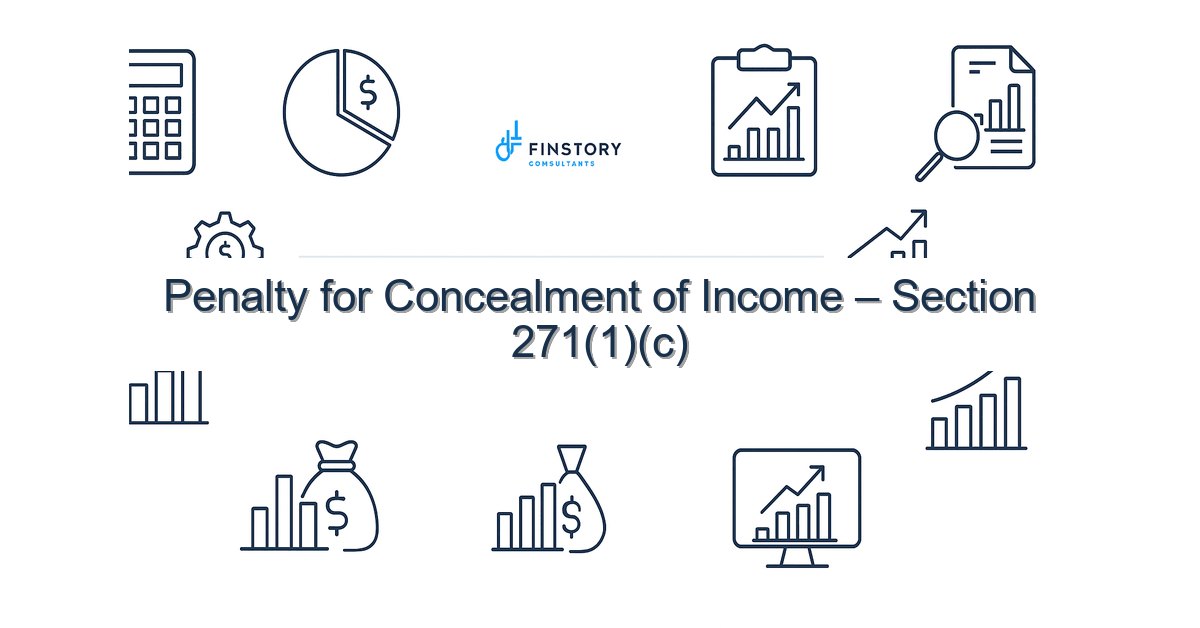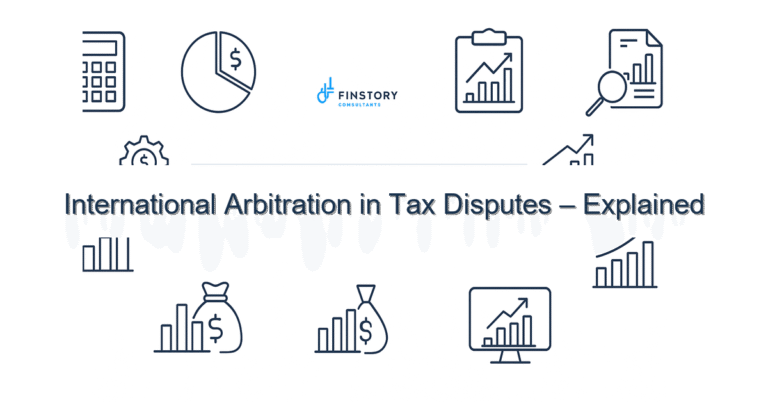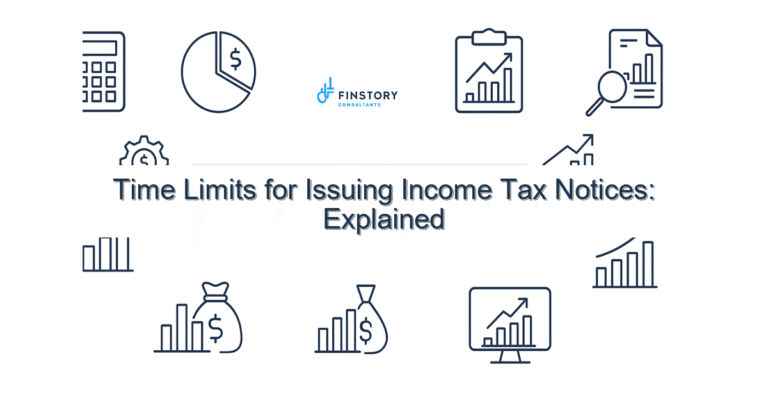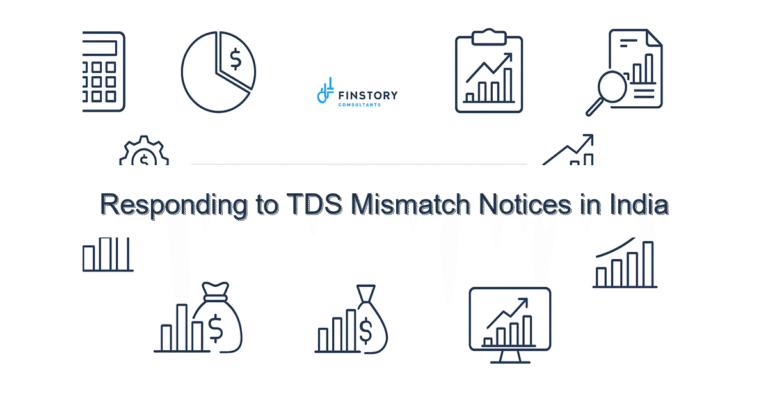Penalty for Concealment of Income – Section 271(1)(c)
Getting a notice for concealment of income can feel like a shock — especially if you thought your ITR was filed correctly. Many salaried professionals, founders and MSME owners tell us they worry about unexpected penalties and complicated legal language.
Summary: Section 271(1)(c) penalises concealment or inaccurate particulars of income; the penalty can be up to 300% of tax or INR 10,000 (whichever is higher) depending on circumstances. Early documentation, reconciliation with AIS/26AS, and timely professional help drastically reduce risk.
What’s the real problem in India?
The Indian tax system uses terms such as AY/PY, CBDT circulars and multiple e-forms that can confuse non-specialists. Notices under Section 271(1)(c) are often triggered by mismatches between your return and government records (like AIS/26AS), unexplained deductions or incorrect disclosures. The penalty framework is punitive if the tax department concludes that income was concealed or particulars were inaccurate intentionally.
- Symptom: A tax notice arrives after your ITR filing — often after the ITR filing last date has passed for that year.
- Symptom: TDS/TCS entries in AIS/26AS don’t match your declared income or credits.
- Symptom: Large deductions (Section 80C limit questions), capital gains (missing indexation), or unusual business expenses trigger queries.
- Symptom: Confusion over choosing new vs old regime slabs leading to reporting errors.
What people get wrong
Many taxpayers assume that an honest mistake will never be considered concealment. That’s risky. The tax officer evaluates intent and the quality of evidence. Common pitfalls include:
- Not reconciling Form 16 / books of accounts with AIS/26AS and the e-filing portal before submission.
- Claiming high deductions without supporting proofs (e.g., Section 80C limit misuse or vague home loan interest claims).
- Under-reporting capital gains and ignoring capital gains indexation or TDS/TCS credits.
- Missing to disclose foreign income, gifts, or other reportable items because of unfamiliarity with schedules and AY/PY timelines.
A better approach
Think of compliance as a short checklist and a record-keeping habit rather than a one-time task at ITR time. This three-step framework reduces the chance of a Section 271(1)(c) penalty:
- Reconcile: Cross-check income and credits across Form 16/Form 26AS/AIS, bank statements and books before filing.
- Document: Maintain supporting documents — receipts for deductions (Section 80C limit records), capital gains computations (with indexation where applicable), invoices for expenses and loan statements.
- Respond early: If you get a notice, reply with facts and records immediately and seek representation if there’s a material difference.
- Review regime choice: Annually evaluate new vs old regime slabs to ensure correct tax computation and avoid ad-hoc reporting errors.
Real-world example: A Bengaluru founder missed reconciling a Rs 6 lakh TDS credit in AIS/26AS from a short-term advisory contract. The mismatch led to a notice claiming concealment; after providing bank receipts and a contract, the department reduced the penalty to a minimal sum. Early reconciliation would have avoided the notice entirely.
Quick implementation checklist
- Pull AIS/26AS and Form 26AS for the relevant AY and compare with your draft ITR this week.
- Collect proofs for all Section 80C claims and ensure you don’t exceed the Section 80C limit.
- Compute capital gains with or without capital gains indexation and confirm TDS/TCS credits are claimed.
- Reconcile business income with bank statements and GST records (if applicable).
- Check that the ITR has correct PAN/AADHAAR and that nominees/addresses match to avoid clerical mismatches.
- If you miss a disclosure, file a revised return (before assessments proceed) and attach an explanation.
- Maintain a digital folder of proofs (receipts, invoices, agreements) linked to each ITR year.
- Seek professional help for complex items such as transfer pricing, capital gains on property, or foreign income.
What success looks like
When you adopt proper controls and documentation, measurable outcomes include:
- Reduced notices — fewer Section 271(1)(c) show-cause communications.
- Lower penalty exposure — settlement or waiver instead of full penal demand.
- Faster ITR processing and refunds because AIS/26AS reconciliation is clean.
- Accurate tax planning using new vs old regime slabs leading to optimal tax outgo.
- Improved lender/ investor confidence when financials and taxes are clean.
Risks & how to manage them
Risk: The tax officer interprets an omission as deliberate concealment. Mitigation: Keep contemporaneous documents, explain genuine errors promptly and use professional representation. Risk: Penalty amounts can be large (up to 300% of tax in severe cases). Mitigation: If assessments are underway, negotiate or file appeals within time limits set by CBDT timelines and prescribed procedures.
Tools & data
Use these India-specific tools to reduce risk:
- AIS/26AS — reconcile all TDS/TCS credits and refunds.
- Income tax e-filing portal — validate ITR and view notices promptly.
- TDS/TCS tracking tools and payroll software — for salaried taxpayers and employers to avoid mismatches.
- Accounting tools for MSMEs and founders — maintain ledgers and GST reconciliations to back up business claims.
- Keep key calendar dates in mind like the ITR filing last date and quarterly TDS deposit timelines.
FAQs
Q: What is the difference between a mistake and concealment?
A: A genuine clerical mistake, when supported by records and corrected promptly (e.g., via revised return), is less likely to be treated as concealment. Concealment implies intent or sustained inaccuracy without reasonable explanation.
Q: How is the penalty under Section 271(1)(c) calculated?
A: The penalty can be a minimum of INR 10,000 and extend up to 300% of the tax payable on the concealed income in deliberate cases. The final amount depends on facts, intent, and representations.
Q: I found an error after the ITR filing last date. What should I do?
A: File a revised return if permitted for that AY, reconcile AIS/26AS, and attach clarifying documents. If you receive a notice, respond promptly with evidence and an explanation.
Q: Can TDS/TCS mismatches lead to a penalty?
A: Yes. If TDS/TCS credits in AIS/26AS differ from what you reported and you cannot substantiate the difference, the department may argue concealment. Regular reconciliation avoids this.
Next steps
If you’ve received an intimation or notice, don’t delay — early action reduces both stress and financial risk. For ongoing prevention, build a simple monthly reconciliation routine and keep digital backups of all proofs.
Need help? Review our guides for step-by-step ITR filing procedures and tax-saving strategies: [link:ITR guide] and [link:tax-saving tips]. For complex queries — foreign income, capital gains indexation, or payroll TDS/TCS issues — talk to an expert.
Work with Finstory. Speak with an Expert for a personalised plan to reduce your tax outgo and stay compliant. Book a free 20-min consultation.
📞 Need help with Income Tax in India?
Book a 20-min consultation with our tax team. Individuals, founders & MSMEs welcome.
Prefer email or phone? Write to info@finstory.net
or call +91 44-45811170.






